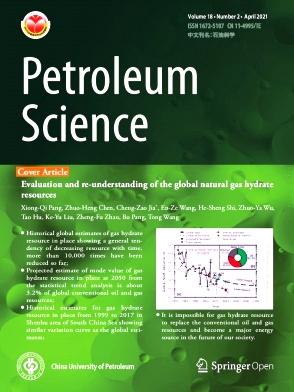Detailed oil-source correlation within the sequence and sedimentary framework in the Fushan Depression, Beibuwan Basin, South China Sea
IF 6
1区 工程技术
Q2 ENERGY & FUELS
引用次数: 0
Abstract
The Fushan Depression is one of the petroliferous depressions in the Beibuwan Basin, South China Sea. Previous studies have preliminarily explored the origin and source of crude oils in some areas of this depression. Nevertheless, no systematic investigations on the classification and origin of oils and hydrocarbon migration processes have been made for the entire petroleum system in this depression, which has significantly hindered the hydrocarbon exploration in the region. A total of 32 mudstone and 58 oil samples from the Fushan Depression were analyzed to definite the detailed oil-source correlation within the sequence and sedimentary framework. The organic matter of third member of Paleogene Liushagang Formation (Els3) source rocks, both deltaic and lacustrine mudstone, are algal-dominated with high abundance of C23 tricyclic terpane and C30 4-methylsteranes. The deltaic source rocks occurring in the first member (Els1) and second member (Els2) of the Paleogene Liushagang Formation are characterized by high abundance of C19+20 tricyclic terpane and oleanane, reflecting a more terrestrial plants contribution. While lacustrine source rocks of Els1 and Els2 display the reduced input of terrigenous organic matter with relatively low abundance of C19+20 tricyclic terpane and oleanane. Three types of oils were identified by their biomarker compositions in this study. Most of the oils discovered in the Huachang and Bailian Els1 reservoir belong to group A and were derived from lacustrine source rocks of Els1 and Els2. Group B oils are found within the Els1 and Els2 reservoirs, showing a close relation to the deltaic source rocks of Els1 and Els2, respectively. Group C oils, occurring in the Els3 reservoirs, have a good affinity with the Els3 source rocks. The spatial distribution and accumulation of different groups of oils are mainly controlled by the sedimentary facies and specific structural conditions. The Els2 reservoir in the Yong'an area belonging to Group B oil, are adjacent to the source kitchen and could be considered as the favorable exploration area in the future.
求助全文
约1分钟内获得全文
求助全文
来源期刊

Petroleum Science
地学-地球化学与地球物理
CiteScore
7.70
自引率
16.10%
发文量
311
审稿时长
63 days
期刊介绍:
Petroleum Science is the only English journal in China on petroleum science and technology that is intended for professionals engaged in petroleum science research and technical applications all over the world, as well as the managerial personnel of oil companies. It covers petroleum geology, petroleum geophysics, petroleum engineering, petrochemistry & chemical engineering, petroleum mechanics, and economic management. It aims to introduce the latest results in oil industry research in China, promote cooperation in petroleum science research between China and the rest of the world, and build a bridge for scientific communication between China and the world.
 求助内容:
求助内容: 应助结果提醒方式:
应助结果提醒方式:


